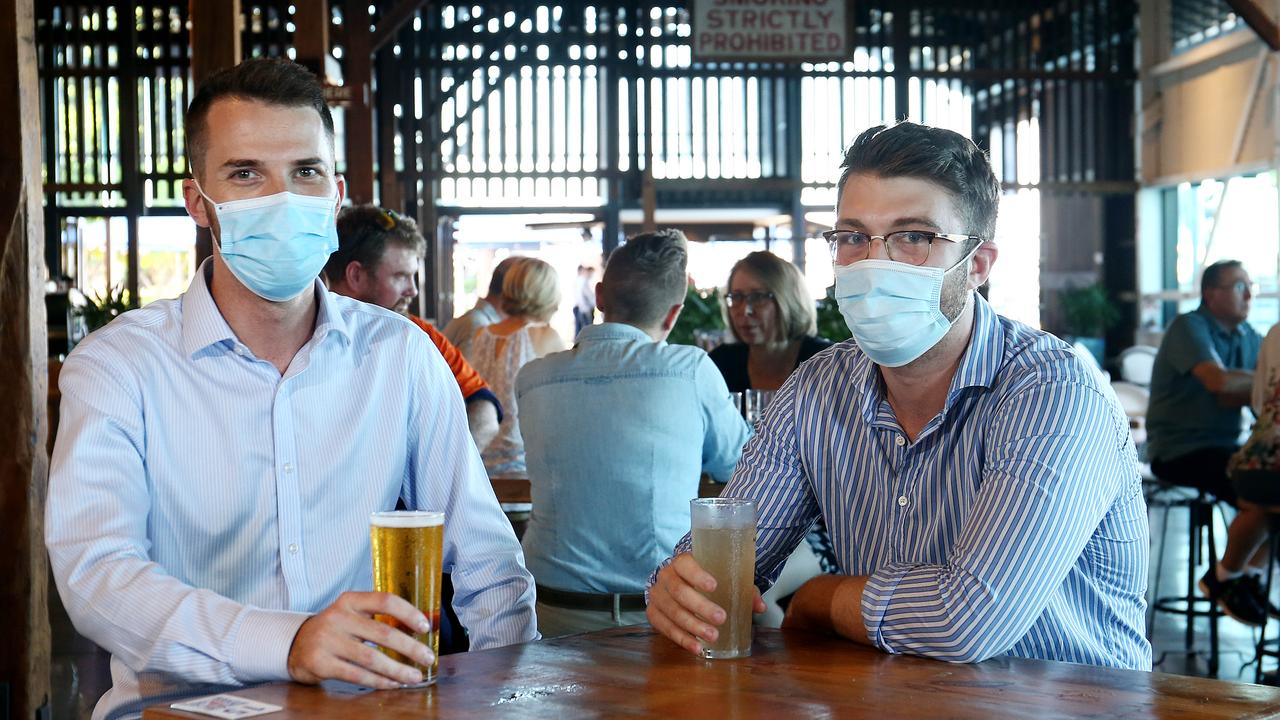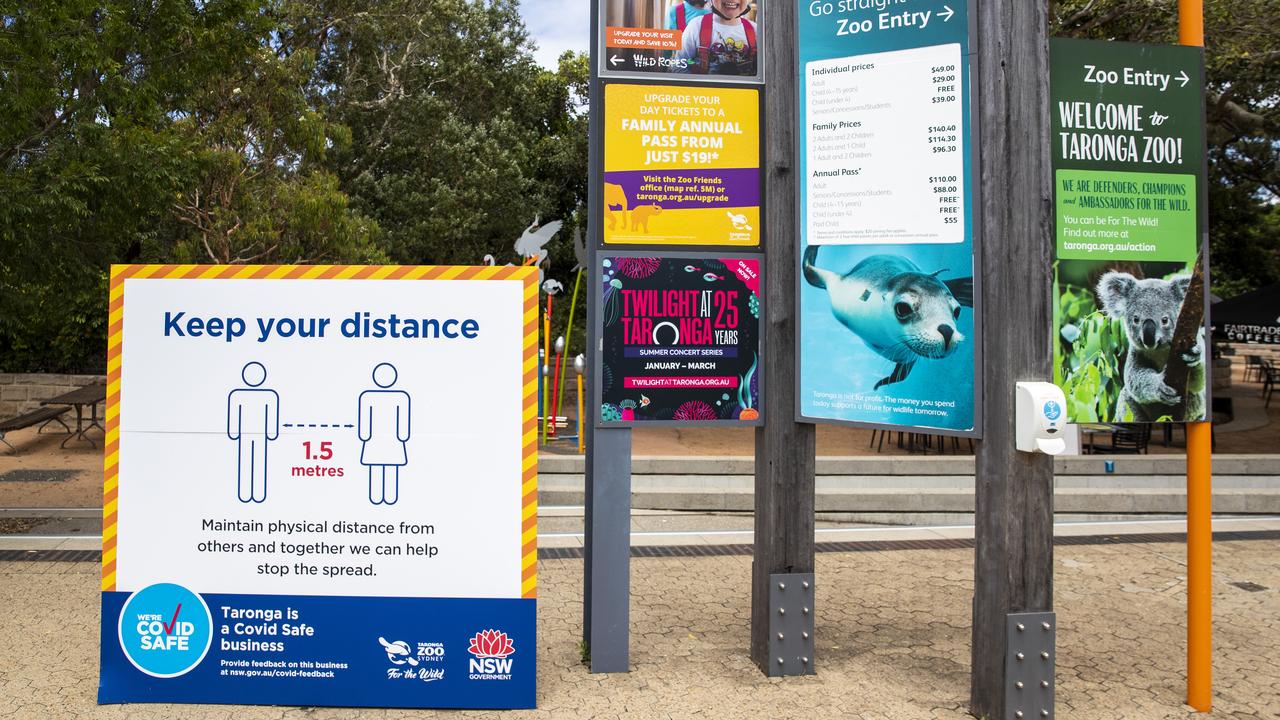MIT researchers say ‘six-foot rule’ behind social distancing policies has ‘no physical basis’
It’s changed the way we live, but shock research from a top US university now suggests there is no real benefit to social distancing.
New research has cast doubt on the “six-foot rule” that has informed social distancing guidelines used around the world during the COVID-19 pandemic.
Massachusetts Institute of Technology (MIT) professors Martin Z. Bazant and John W.M. Bush have challenged the long-held guideline adopted by the US Centers for Disease Control and Prevention and the World Health Organisation.
They claim the risk of being exposed to the virus indoors is the same at 60 feet as six feet – even while wearing a mask.
The six-foot rule, the researchers argue, is largely based on an outdated belief that the biggest risk is so-called “large drop transmission” directly from the mouth of an infected person, whereas there is now “overwhelming evidence” that airborne transmission through microdroplets held aloft on air currents actually plays the dominant role in the spread of COVID-19.
That means the six-foot rule offers little protection from virus-bearing aerosol droplets that are sufficiently small to be continuously mixed through an indoor space.

Instead of social distancing-based venue capacity limits depending on the size of a room, they propose new indoor safety guidelines that would put a limit on the “cumulative exposure time”.
“We argue there really isn’t much of a benefit to the six-foot rule, especially when people are wearing masks,” Prof Bazant told CNBC.
“It really has no physical basis because the air a person is breathing while wearing a mask tends to rise and comes down elsewhere in the room so you’re more exposed to the average background than you are to a person at a distance.”
In Australia, the Federal Health Department’s “COVIDSafe” guidelines are based on physical distancing of 1.5 metres (five feet) in public and there are indoor density requirements of four square metres per person.

RELATED: Three more blood clot cases linked to vaccine
The MIT paper, published in the journal PNAS last week, outlines a new method for calculating COVID-19 exposure risk in indoor settings which takes into account factors including rates of ventilation and air filtration, dimensions of the room, infectiousness of variants, face mask use and activities that affect “breathing rate” and “respiratory activity” such as eating, speaking, singing or exercising.
Citing the example of a typical school classroom, they note that “extended periods of physical activity, collective speech, or singing would lower the time limit by an order of magnitude”.
Speaking to CNBC, Prof Bazant said the WHO and CDC had overlooked the important variable of the amount of time spent indoors, and that the existing guidelines for enforcing occupancy caps were flawed.
He said six-feet social distancing rules that had closed schools and businesses were “just not reasonable”.
“What our analysis continues to show is that many spaces that have been shut down in fact don’t need to be,” he said.
“Often times the space is large enough, the ventilation is good enough, the amount of time people spend together is such that those spaces can be safely operated even at full capacity and the scientific support for reduced capacity in those spaces is really not very good. I think if you run the numbers, even right now for many types of spaces you’d find that there is not a need for occupancy restrictions.”
He added: “This emphasis on distancing has been really misplaced from the very beginning.
“The CDC or WHO have never really provided justification for it, they’ve just said this is what you must do and the only justification I’m aware of, is based on studies of coughs and sneezes, where they look at the largest particles that might sediment onto the floor and even then it’s very approximate, you can certainly have longer or shorter range, large droplets.”
RELATED: Death penalty call as India runs out of Oxygen

RELATED: Grim Global COVID milestone reached
Social distancing, he argued, wasn’t “helping you that much and it’s also giving you a false sense of security because you’re as safe at six feet as you are at 60 feet if you’re indoors”, noting “everyone in that space is at roughly the same risk, actually”.
He also claimed that social distancing makes virtually no sense outdoors and doing so with masks on was “kind of crazy”.
“If you look at the air flow outside, the infected air would be swept away and very unlikely to cause transmission,” he said.
“There are very few recorded instances of outdoor transmission. Crowded spaces outdoor could be an issue, but if people are keeping a reasonable distance of like three feet outside, I feel pretty comfortable with that even without masks frankly.”
It comes as pressure grows on the CDC and other health bodies to ditch the six-foot guideline, particularly in the context of schools, many of which remain closed in the US as they do not have the space to keep students six feet apart.

“It never struck me that six feet was particularly sensical in the context of mitigation,” Dr Ashish Jha, dean of the Brown University School of Public Health, told The New York Times last month. “I wish the CDC would just come out and say this is not a major issue.”
The newspaper noted that the origin of the recommendation was “something of a mystery”.
“It’s almost like it was pulled out of thin air,” said Linsey Marr, an expert on viral transmission at Virginia Tech University.
America’s top infectious disease expert Dr Anthony Fauci last month hinted that authorities were considering revising the six-foot rule to three feet, in response to new research that found no statistically significant difference in infection rates in school districts using the different limits.
“What the CDC wants to do is accumulate data, and when data shows ability to be three feet, they will act accordingly,” Dr Fauci told CNN, adding, “I don’t want to get ahead of official guidelines.”




